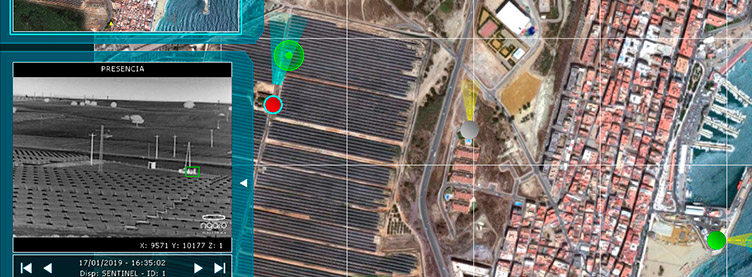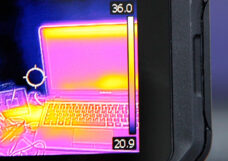
Why your company needs a VMS system
May 29, 2019
The purpose of VMS (Video Management Software) is to manage all the information captured by devices and cameras in a surveillance system, acting as a control center. Nowadays, this software can also perform video analyses such as facial recognition, the recognition of identifiers or people control, in addition to managing additional devices such as alarms – all of this thanks to the connection to a wide area network (WAN) or a local area network (LAN).
What are the advantages offered by a VMS?
VMS systems have very advanced features, such as auto-backup, load balancing, third-party integration and specific video analytics. In addition, the cost of acquiring VMS software licenses is lower than for other devices such as Network Video Recorders (NVR).
VMS systems offer a great flexibility in relation to hardware scalability, since it is possible to add or modify some of its components to configure them in such a way that the device addresses specific needs for a given use. More specifically, when compared to NVRs, they are more customizable.
In addition, updating and scaling is much simpler with a VMS system – which is worth taking into account, considering that it is common to expand systems. With an NVR it would be necessary to replace it with a new one, while VMS systems will let you avoid this financial cost.
Another plus for VMS is that they offer the possibility of choosing one’s own hardware. Even if these solutions are implemented, equipment and servers that are already in use in a company can remain in use, maintaining the current licenses and service policies that are in effect.
VMS systems have very advanced features, such as auto-backup, load balancing, third-party integration and specific video analytics
How to choose a VMS software
When choosing a VMS software for your company it is essential to define the needs that it needs to address, as well as determine which facilities require its use. Also, what the required features and technical specifications are. Residential buildings, hotels, small and mid-sized companies, urban security… these devices have broad applications and offer specific features for each case.
For our business or company we might need facial recognition or license plate recognition features, for example, and we can manage all this from a single location. A feature that can be implemented and increases security is integrating the system with an alarm control panel, so that an alarm is triggered when an intruder violates the perimeter being watched.
Another important aspect when choosing a VMS software is the system’s accessibility by the people who will operate it, so that it turns out to be simple and friendly. A powerful VMS that is not intuitive or agile, or confusing, can result in its features not being fully taken advantage of.
On the other hand, we need to make sure that the VMS has a permanent technical support service to resolve any incident that may emerge during its operation. The fact that some of these devices are connected to the cloud makes it easier for them to be remotely administrated, which, on one hand, allows for their remote operation, and on the other, simplifies problem resolution.
When choosing a VMS software for your company it is essential to define the needs that it needs to address
Grekkom’s VMS, the right solution for your company
Grekkom Technologies offers VMS systems with the most cutting-edge technology to address all the needs of your company. Ngaro Viewer is a security camera screen interface that allows for the remote control and monitoring of detection stations installed on the field. It is part of Ngaro® VMS and its purpose is perimeter surveillance, maritime surveillance, fire prevention and detection, traffic control and risk prevention, in addition to various applications in the field of health and traffic.
Ngaro GIS is a geographic information system that allows for the monitoring of the alarms raised by the system in real time on the terrain’s orthophoto. Its applications include perimeter surveillance, maritime surveillance, fire prevention and detection and traffic. Meanwhile, Ngaro Desktop is an alarm, status and operation verification module that is compatible with Ngaro and other manufacturers’ systems, for perimeter surveillance, maritime surveillance, fire prevention and detection, traffic, process control and risk prevention.





